Au Festival d’Almada 2023: portraits de femme
-
- La soumission à laquelle les femmes furent, au long des siècles, contraintes. La soumission à laquelle les femmes peuvent encore être forcées, selon le pays où elles vivent, la fonction qu’elles occupent au sein de la société, l’environnement politique, culturel, religieux qui est le leur : le théâtre, quand il s’inspire intelligemment de la réalité, sait la dénoncer, et cela sans exclure humour, poésie ni qualité littéraire.
Jogging, ou le théâtre comme agora, de et par Hanane Hajj Al
« Je suis un morceau de ce puzzle qu’est Médée », affirme volontiers Hanane Hajj Ali lorsqu’on l’interroge sur l’omniprésence de cette figure mythologique dans son “seule en scène”, une performance qui allie ses deux passions avouées, le théâtre et le jogging. Artiste, chercheuse et pédagogue, figure incontournable de la scène libanaise, elle se déclare citoyenne engagée, qui œuvre pour briser les tabous, les « tirer de sous le tapis » – sexe, religion, politique, le « triangle des Bermudes libanais ». Activiste convaincue, elle défend la liberté d’expression, la démocratisation et la décentralisation de la culture, dans un pays oppressif où toujours règne la censure.
Dans Beyrouth aujourd’hui sinistrée, sa ville qu’elle ne veut pas quitter, et dont elle partage les souffrances qui la ravagent depuis les événements de 2019, elle court pour, dit-elle non sans humour – car elle n’en est pas dépourvue, ce qui allège le propos dramatique – , elle court chaque matin afin de « prévenir le stress, la dépression et l’ostéoporose ». Courir est un rituel, le théâtre en est un autre : si Hanane est, ainsi que nombre d’actrices, hantée par le personnage de la Médée antique, elle s’est toujours refusée à endosser le rôle, tant elle jugeait impensable le fait de donner la mort à ses propres enfants. Mais un matin, les rêves dans lesquels elle se ressource en courant, et qui peuvent être songeries parfaitement érotiques, les rêves devenus cauchemars ont pris une couleur tragique. Son propre fils souffrant d’un cancer soudain, la terrible douleur de l’enfant déchirant alors son cœur de mère, elle a compris que, toutes, nous pourrions être, selon les circonstances, des “Médée” abrégeant par le crime ce qui nous deviendrait insupportable.
Alors, sur scène, entre imaginaire et réalité, entre comique et tragique, Hanane Hajj Ali nous conte ses “Médée” . De façon un brin parodique, la Médée fictive trahie par Jason, la magicienne maléfique, l’impitoyable tueuse de la mythologie grecque. De façon beaucoup plus grave et sérieuse, faisant sourdre l’émotion de son public, ses “Médée” réelles, libanaises et contemporaines. C’est l’histoire restée mystérieuse et controversée d’Yvonne, mère de famille qui, en 2009, assassina ses trois filles avant de se donner la mort. C’est le drame de Zahra, jeune femme traditionnelle, qui à la suite de l’homme aimé suivit un parcours religieux islamiste. Qui, après l’abandon de son mari, éleva seule ses trois fils en les prédestinant au martyre guerrier. La mort, ou le sacrifice, comme seul moyen d’échapper aux souffrances et violences de la vie. Dans cet esprit sera lue la très sensible lettre d’amour et d’explication qu’avant de se suicider, en 1941, l’écrivaine britannique Virginia Woolf destina à son mari. Voilée, dévoilée, les voiles que l’on met ou rejette, la perruque de même, les vêtements qu’on endosse ou défait, le maquillage appliqué ou fondu, le rire et les larmes, tout nous dit l’ambiguïté de nos existences de femmes.
Le dynamisme, l’énergie, la vitalité dont la comédienne fait preuve, elle les explique en disant « puiser dans la sève du sol à chaque catastrophe ». Pour avoir toujours la force de dénoncer et abattre les préjugés, sur les scènes de par le monde, au Festival Off puis In d’Avignon comme au festival d’Almada. Pour dénoncer les stéréotypes dont on charge les femmes dans le monde arabe. Pour rendre hommage aux femmes libanaises, aux mères libanaises, et à Beyrouth. Telle est l’ambition reconnue de Hanane Hajj Ali, et il faut dire qu’elle réussit dans cette entreprise généreuse, humaniste, quand bien même, selon ses propres dires, « si le théâtre ne change pas le monde, il aide à changer les esprits » !
P.S : il est possible après le spectacle de se procurer le texte du monologue, en arabe, anglais et français, pour « aider à la liberté d’expression au Liban ».
J.B, Almada, le 10 juillet 2023
la source de ce texte est Madinin Art
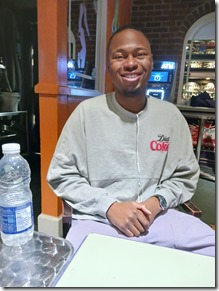
 La reprise d’Angels in America de l’américain Tony Kushner, réaffirme avec vigueur, la pertinence d’un questionnement sur une Amérique puritaine, obsédée par le mal sa punition divine. C’était hier avec l’explosion du sida et le haro sur les homosexuels C’est aujourd’hui avec l’avortement.
La reprise d’Angels in America de l’américain Tony Kushner, réaffirme avec vigueur, la pertinence d’un questionnement sur une Amérique puritaine, obsédée par le mal sa punition divine. C’était hier avec l’explosion du sida et le haro sur les homosexuels C’est aujourd’hui avec l’avortement.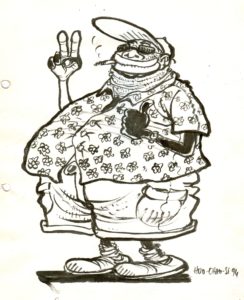
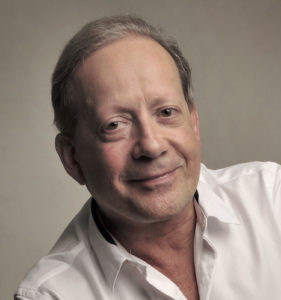
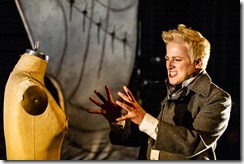
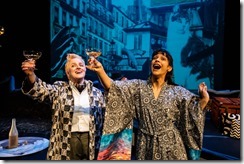 Margo Macdonald and Maryse Fernandes
Margo Macdonald and Maryse Fernandes